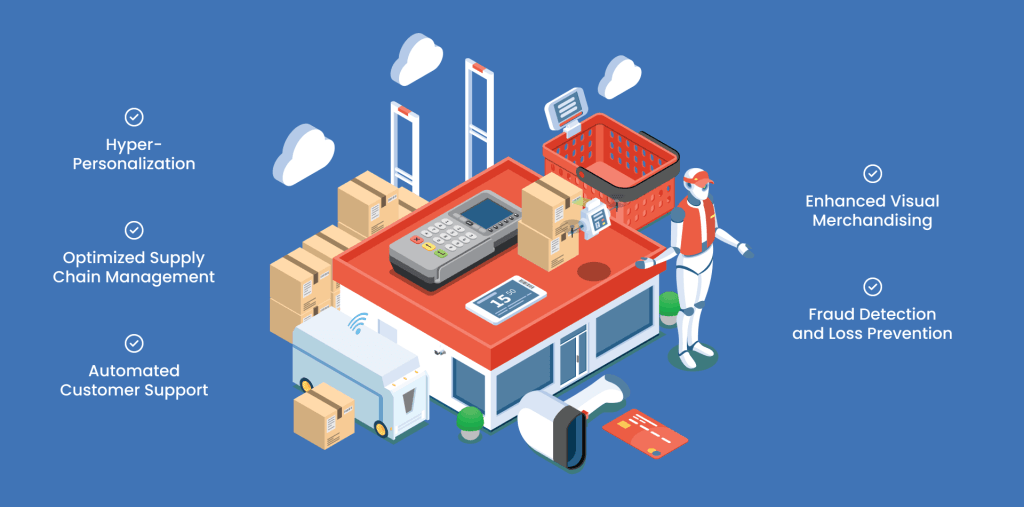Last Updated on –
AI
Generative AI for Retail: Revolutionizing Customer Experience and Sales
1. What is Generative AI for Retail?

- Personalized marketing and recommendations
- Inventory and demand forecasting
- Automated customer service
- Product design and visual merchandising
- Fraud detection and loss prevention
2. Real-World Examples of Generative AI in Retail
1. Amazon: AI-Powered Personalization
2. Walmart: AI-Driven Inventory Management
3. Sephora: Virtual Try-On and AI-Generated Beauty Advice
4. Nike: AI-Generated Product Designs
Nike utilizes generative AI to create innovative sneaker designs. The AI models analyze customer preferences, fashion trends, and ergonomic data to generate new shoe designs that appeal to diverse consumer segments. This allows Nike to launch trend-setting products faster than ever before.
5. H&M: AI-Powered Trend Prediction
H&M’s AI models analyze social media trends, fashion blogs, and customer feedback to predict future fashion trends. This enables the brand to design and launch collections that align with consumer demand, minimizing unsold inventory and maximizing profits.
3. How Generative AI Benefits Retailers
1. Hyper-Personalization
Retailers can use generative AI to create highly personalized shopping experiences, from customized product recommendations to dynamic pricing based on customer preferences.
2. Optimized Supply Chain Management
AI-powered demand forecasting helps retailers manage inventory efficiently, reducing losses and ensuring popular products are always in stock.
3. Automated Customer Support
AI-driven chatbots and virtual assistants provide 24/7 support, answering customer queries and resolving issues in real time, reducing dependency on human agents.
4. Enhanced Visual Merchandising
Generative AI can create engaging visuals for online stores, social media campaigns, and in-store displays, improving customer engagement and brand visibility.
5. Fraud Detection and Loss Prevention
AI models can identify unusual patterns in transactions and detect fraudulent activities, protecting retailers from financial losses.
The Future of Generative AI for Retail
The future of Generative AI for retail is bright, with advancements in AI making it easier for businesses of all sizes to leverage this technology. From AI-driven voice commerce to virtual shopping assistants powered by generative AI, retailers will continue to push the boundaries of innovation.
Conclusion
Generative AI is no longer a futuristic concept; it’s a present-day necessity for retailers aiming to enhance customer experience and boost sales. Brands like Amazon, Walmart, Sephora, Nike, and H&M are already reaping the benefits, and more retailers are joining the AI revolution every day. By adopting Generative AI for retail, businesses can stay ahead in the competitive market and deliver unparalleled value to customers.
Ready to Transform Your Retail Business with Generative AI?
Contact us today to explore AI-driven solutions tailored to your business needs.
FAQ’S
Small retailers can use generative AI for personalized marketing, chatbots for customer support, and demand forecasting to optimize inventory. Many AI tools are now available at affordable rates, making it easier for small businesses to compete with larger retailers.
The cost of implementing generative AI varies depending on the scale and complexity of the solution. Cloud-based AI solutions and third-party platforms offer cost-effective options for businesses looking to start small and scale gradually.
